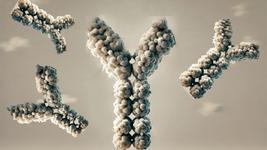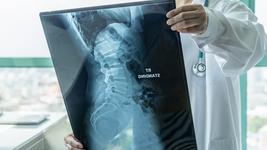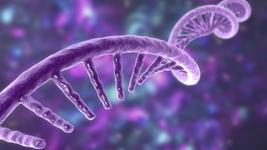CMN Weekly (24 February 2023) - Your Weekly CRISPR Medicine News
By: Gorm Palmgren - Feb. 24, 2023
Top picks
- Prime editing of hematopoietic stem cells (HSCs) has been used to rescue sickle cell disease (SCD) in an in vivo mouse model of SCD. In contrast to most other CRISPR-related approaches for SCD, the new method directly repair the disease-causing mutation in around 40% of HSCs after a single intravenous injection. After this procedure, on average, 43% of the malfunctioning HbS was replaced by normal HbA, significantly mitigating the SCD phenotypes.
- A report in Molecular Therapy describes how high-fidelity RNA-targeting CRISPR-Cas13 can improve motor function in a mouse model of the rare neurodevelopmental disorder Angelman Syndrome (AS). The disease is caused by loss of function mutations in the maternally expressed gene UBE3A. In contrast, the intact and transcriptionally active, paternally inherited UBE3A is silenced by elongation of antisense long noncoding RNA UBE3A-ATS in neurons. Cas13-mediated suppression of the Ube3a-ATS lncRNA significantly alleviated AS-related symptoms, including obesity and motor function.
Research
- Researchers at Genentech Inc. have developed a versatile platform that significantly enhances the potential for CRISPR-mediated transcriptional activation (CRISPRa) across various cellular contexts. The method includes an optimised guide RNA scaffold that significantly enhances CRISPRa functionality and a synthetic guide RNA toolset that enables transient, population-wide gene activation.
- American researchers have developed a lipopeptide-based nanoparticle (LNP) that enables efficient gene editing in skeletal muscles. The guanidinium-rich LNP easily formed a complex with CRISPR Cas9/sgRNA ribonucleoprotein (RNP), leading to 73% gene editing efficiency in GFP-HEK cells with negligible cytotoxicity. Moreover, in vivo studies in mice showed that intramuscular injection of the LNPs induced efficient gene editing in muscular tissues.
- Researchers in South Korea describe a CRISPR-Cas9-mediated approach to rescue Fabry disease nephropathy (FDN) in a kidney organoid model. FDN is caused by mutations in the GLA gene, leading to intra-lysosomal accumulation of globotriaosylceramide (Gb-3) and functional deterioration of the kidney, heart, and cerebrovascular systems. CRISPR is used in the new therapeutic approach to knock out the A4GALT gene involved in synthesising Gb-3.
Industry
- Sherlock Biosciences announced that the U.S. Patent and Trademark Office (USPTO) had granted the company a patent for the diagnostic use of the Cas12 enzyme. CRISPR pioneer Feng Zhang co-founded Sherlock. The company has competed head-on in the Cas12 diagnostic field with another diagnostic developer, Mammoth Biosciences, co-founded by another CRISPR pioneer, Jennifer Doudna.
- CRISPR Therapeutics has reported the full-year 2022 financial results, and the year ended with a cash position of $1,868 million. R&D expenses amounted to $462 million - a considerable increase from $341 million in 2021. Net loss for 2022 was $650 million compared to a net income of $378 million for the year before.
- Moderna - the company behind one of the COVID-19 RNA vaccines - has partnered with Life Edit Therapeutics to develop potentially permanent therapies that use CRISPR to target genes in the liver. The two companies are not disclosing the financial details of the partnership. Still, Life Edit Therapeutics will receive an upfront cash payment, research funding, potential milestone payments, and royalties from Moderna.
Detection
- A new method allows for rapid, visual identification of methicillin-resistant Staphylococcus aureus (MRSA). The method couples CRISPR-Cas12a, recombinase polymerase amplification (RPA) and magnetic nanoparticles (MNPs) and can accurately identify MRSA within two hours just with the naked eye.
- Chinese researchers describe a new ultrasensitive method for detecting exosomal microRNAs that have emerged as ideal biomarkers for early clinical diagnostics. Among other advanced techniques, the electrochemiluminescent biosensor employs a 3D walking nanomotor-mediated CRISPR-Cas12a and tetrahedral DNA nanostructure-modified nanoemitters.
- Another new ultrasensitive method for detecting foodborne pathogens uses a CRISPR-Cas12a mediated strand displacement/hybridisation chain reaction dubbed CSDHCR. For example, when coupled with recombinase polymerase amplification, the biosensor could detect the foodborne pathogen Vibrio vulnificus with a detection limit of 1.0 × 100 CFU/mL.
- A preprint on the bioRxiv server describes a method for programmable RNA detection with CRISPR-Cas12a without the need for reverse transcription or strand displacement. The technique, Split Activators for Highly Accessible RNA Analysis or SAHARA, utilises the discovery that while the PAM-proximal "seed" region of the crRNA exclusively recognises DNA for initiating trans-cleavage, the PAM-distal part or 3'-end of the crRNA can tolerate both RNA and DNA substrates.
Reviews
- Gene Therapy as an Emerging Treatment for Scn2a Mutation-Induced Autism Spectrum Disorders. This perspective discusses the implications of the loss of function (LOF) mutations in Scn2a as one of the most commonly affected loci linked to autism and the potential efficacy of CRISPR to restore various Scn2a-insufficiencies.
News from CRISPR Medicine News
- Monday, we reported on a novel CRISPR-Cas13d therapy for Huntington’s disease developed by Johns Hopkins and University of California San Diego researchers. Huntington's disease is fatal, and despite decades of research, there is no known cure. The new approach, however, uses Cas13d to deplete cells for the mutant mRNA transcripts that contribute to the pathogenesis of the disease.
To get more of the CRISPR Medicine News delivered to your inbox, sign up to the free weekly CMN Newsletter here.
Tags
CLINICAL TRIALS
IND Enabling
Phase I
Phase II
Phase III
IND Enabling
Phase I
Phase II
Phase III
Amyotrophic Lateral Sclerosis, ALS, or Frontotemporal Dementia FTD, (NCT04931862)
Sponsors:
Wave Life Sciences Ltd.
Sponsors:
Wave Life Sciences Ltd.
IND Enabling
Phase I
Phase II
Phase III







